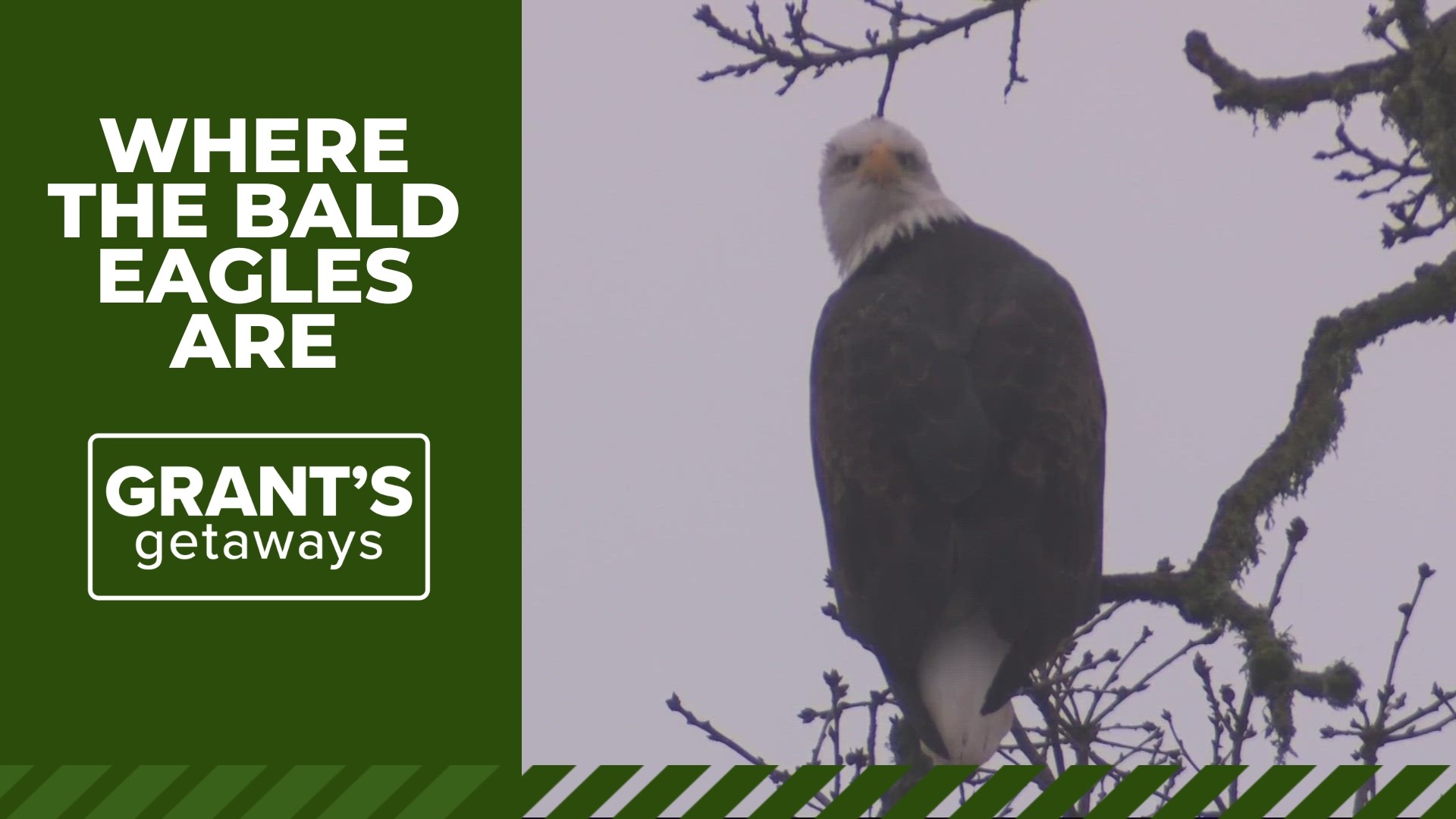CORVALLIS, Ore. — Our nation’s symbol puts on quite a wintertime show that you can enjoy on short drives across the countryside near Corvallis.
One of the most amazing Oregon wildlife moments is found atop four-story-tall cottonwood trees near Corvallis where an eagle "convocation" draws up to 100 eagles in the treetops each evening.
Even more remarkable, according to Jeff Fleischer, a retired U.S. Fish and Wildlife Refuge Manager, is that this convocation of eagles didn’t exist ten years ago.
Fleischer has tallied a rapid rise in the wintertime Willamette Valley eagle population.
“We have seen a wholesale increase; a doubling and then tripling of bald eagles in the southern end of the Willamette Valley.”
Fleischer is a member of the East Cascades Audubon Society and he has led a statewide Raptor Survey Project. He will drive more than 2,400 miles across Willamette Valley main lines and backroads to count eagles in trees, on poles, in fields or in flight.
Over the years, the typical high count for a winter’s day was 50. Fleisher said that that number has “skyrocketed” in the past decade.
“We recently had 217 in one day,” he marveled.
Fleischer said he thinks more eagles have arrived in the Willamette Valley because the dining is so good.
“During the winter, a lot of sheep … will die for various reasons and the carcasses are left in the fields," he said. "That’s what eagles key on without question!”
Fleischer said the winter sheep population has grown because farmers have changed the types of grass that they grow for Oregon’s grass seed market. New grasses tolerate winter grazing and allow farmers to make more money by grazing more flocks of sheep.
“The increase in sheep brought the increase in eagles,” noted Fleischer. “It’s an easily accessed food source and eagles don’t have to expend a lot of energy to eat.”
Joel Geier is a member of Oregon’s Field Ornithologists, and his organization partnered with other groups, including Oregon’s Division of Tourism, to identify 130 “Birding Trails” in the Willamette Valley. He said eagle viewing opportunities are spectacular and could bring even more visitors to rural towns in the valley.
“You may see eagles standing on the ground, perched in trees are flying across the fields — they are distinct and hard to miss.”
Geier said visitors can follow the Willamette Valley Birding Trail that goes past the eagle convocation near Tangent in Linn County.
“You don’t need fancy optics to see eagles because they are so big. Some may be seen just a hundred yards off the roadway.”
Steve Seibel enjoys taking photos of eagles and he has documented their feeding behavior.
“Typically, the birds displace each other — that is, one will feed for awhile and then another will come in and move the first bird away," he explained. "The food seems to be so abundant that they don’t fight to hold their position ... seems like they’re living in the land of plenty here.”
Geier reminds visitors that etiquette demands you should pull to the side of the road and not block private roads or driveways.
“Be aware that almost everything ten feet off the road is private land,” said Geier. ”So stay on the shoulder of the roadway and don’t wander across fields.”
You can also visit wildlife refuges and see eagles in the Willamette Valley.
Molly Monroe, a wildlife biologist ,said that there are three wildlife refuges — including William Finley National Refuge near Corvallis, Ankeny and Baskett Slough also — that are easily accessed public settings to see bald eagles and other birds, including thousands of waterfowl.
“As long as you find open bodies of water where there are ducks and geese, it’s a given you’ll see one or two eagles," Monroe said. "They are always on watch — either perched or actively hunting. It’s a treat for everyone to see an eagle.”
For information about Oregon’s birding trails and to get the weekly wildlife report about birds and other wildlife activity, visit the Oregon Department of Fish and Wildlife bird watching page.
Be sure to watch the weekly half hour program of Grant’s Getaways. The show airs each Saturday and Sunday at 4pm on KGW.
For something different, you can follow my Oregon adventures via the Grant’s Getaways Podcast: Each segment is a story-telling session where I relate behind the scenes stories from four decades of travel and television reporting.
You can also learn more about many of my favorite Oregon travels and adventures in the Grant’s Getaways book series, including:
- "Grants Getaways I," Photography by Steve Terrill
- "Grant's Getaways II," Photography by Steve Terrill
- “Grant’s Getaways: 101 Oregon Adventures,” Photography by Jeff Kastner
- “Grant’s Getaways: Guide to Wildlife Watching in Oregon,” Photography by Jeff Kastner
- “Grant’s Getaways: Oregon Adventures with the Kids,” Photography by Jeff Kastner
The book collection offers hundreds of outdoor activities across Oregon and promises to engage a kid of any age.
You can reach me: Gmcomie@kgw.com

